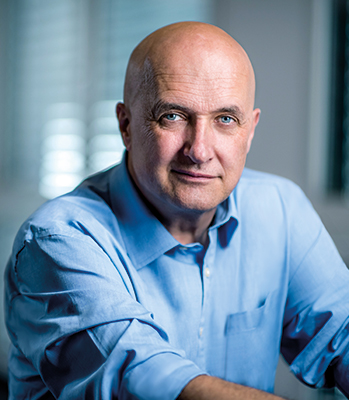Scientific Work and Clinical Application
Prof. Ihde has developed the Technology of the Strategic Implant®. Due to his enormous clincial experience, he has the ability to refine and improve existing methods and ways of treatment. He shares his knowledge with his large group of students around the world. This constantly leads to new scientific projects and many of his students (which are skilled and hard working professionals in their own right) participate in these developments.
Prof. Ihde's creed towards his work can be best summarized by these words of the Russian academic I. P. Pavlov at the end of the 19th century:
"Remember that science claims a man’s whole life. Had he two lives they would not suffice. Science demands an undivided allegiance from its followers. In your work and in your research there must always be passion."
Strategic Implant®
The mainstream in dental implantology today uses conventional screw-type (and two-stage) implants. But the limitations provided by the native bone either prevent treatments at all or make them complicated and lengthy. This means many patients could not be treated with implants at all, even though they needed and wanted them.
At the turn of the century, the time had come to search for true progress in dental implantology. That this would require a new way of thinking has become obvious, since the development of traditional implant systems seems to have been locked in attempts to modify implant surfaces. The inherent limitations of cylindrical and screw implants were, and are, unfortunately too often taken for granted and never seem to be questioned. On the contrary – more and more complicated and at the same time risky surgical procedures are being included into routine protocols, and bone graft donor regions are identified, all in an attempt to adapt the shape of the bone to the shape of the conventional implant rather than the other way around. In doing so, great effort is expended to force the build-up of bone in regions of the body where there had never been any bone in the first place or where the body had (often for good reasons) eliminated any bone that may once have been present. These bone augmentation procedures are associated with additional pain, considerable risks, and enormous cost. The require treatments often over many years and in some case stable results are nevertheless not achieved. That such attempts are made at all, is usually justified by pointing out the alleged absence of alternatives.
But alternatives, true alternatives, exist – and they work.
The BOI® principle has allowed implantologists to provide fixed restorations for every patient, without exception, who has ever approached them. The distal areas of the mandible no longer present with borderline situations from the point of view of the implantologists, nor does the maxillary posterior region. The situation has improved tremendously. Today, dentists are able to provide implants to patients where bone augmentation procedures and implants placed by oral and maxillofacial surgeons have failed.

